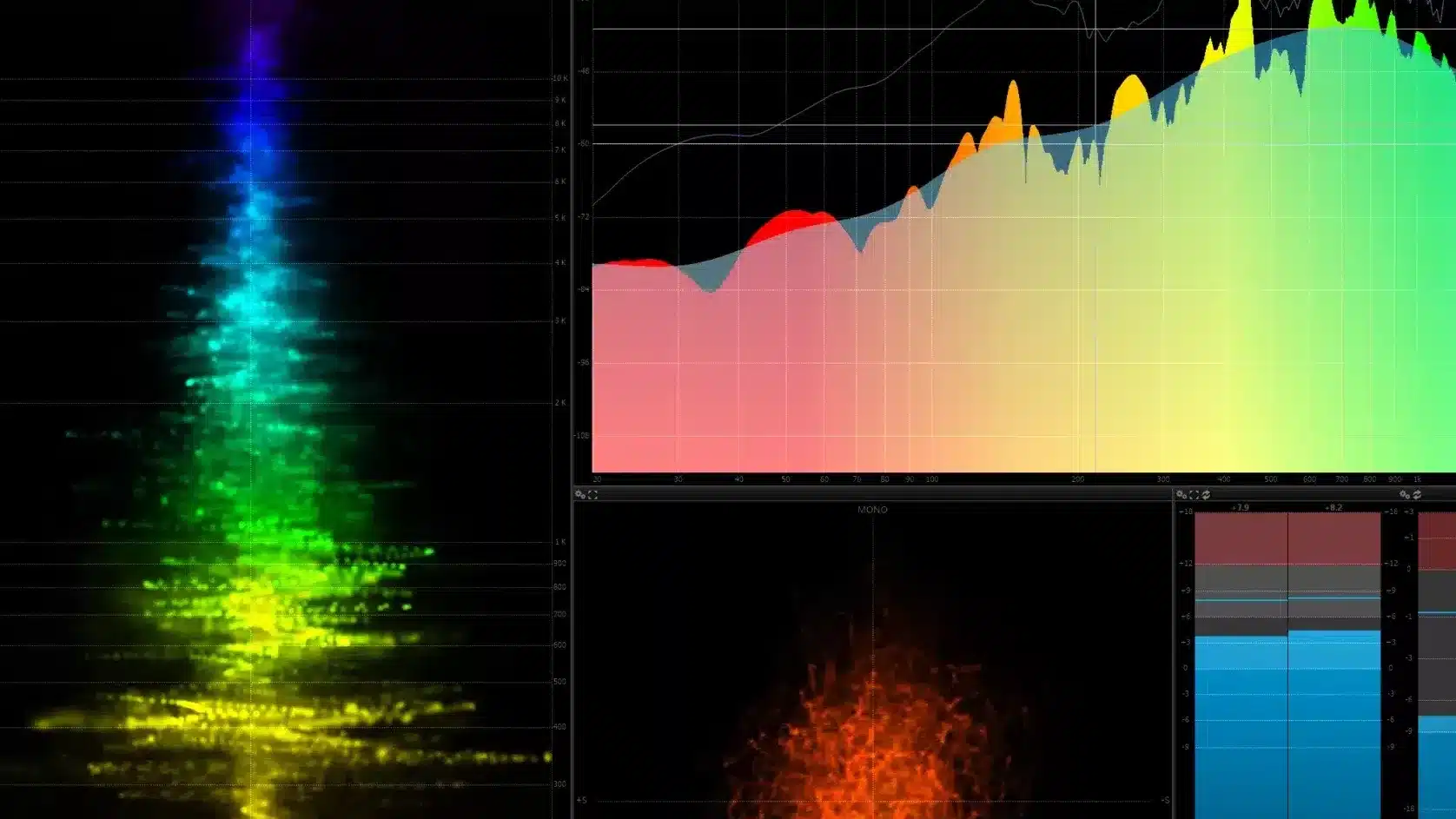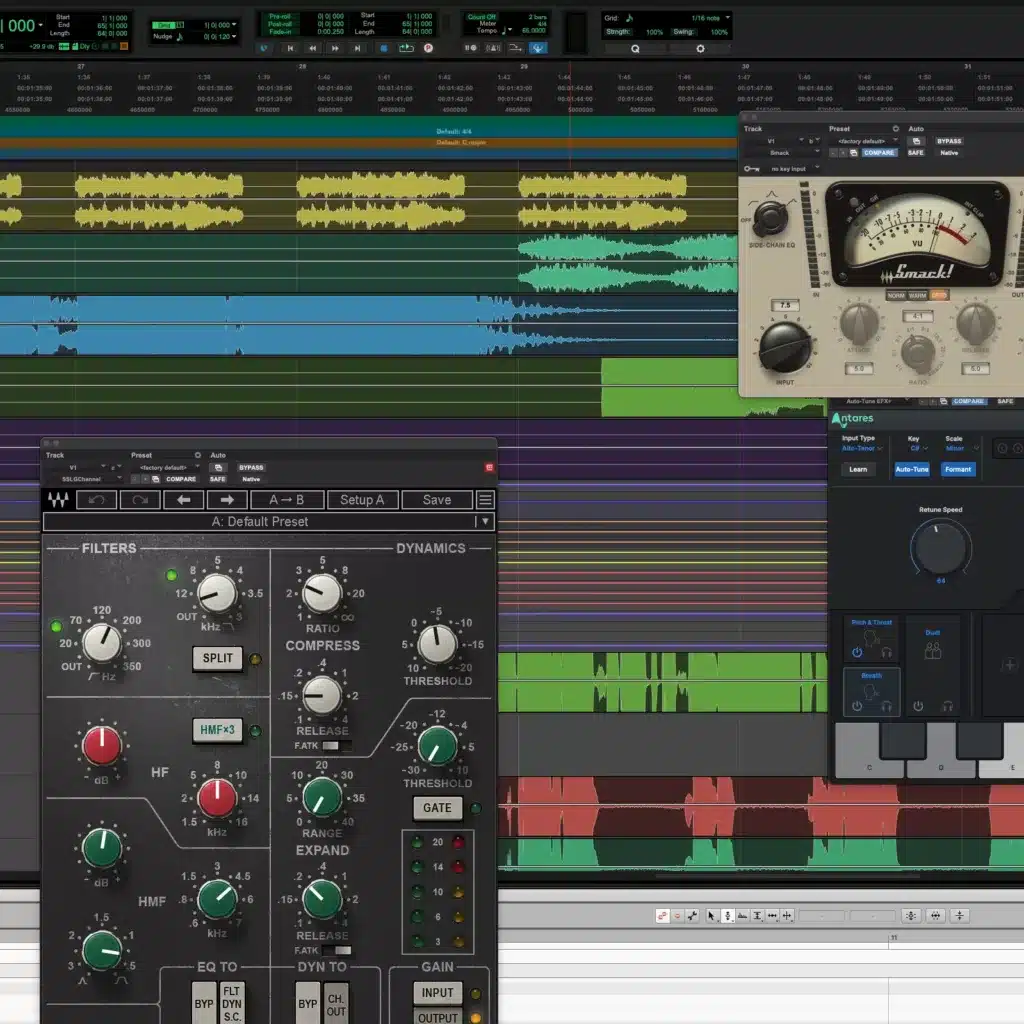Is it mixing or is it mastering? Which is more important? There are lots of questions about what to do after you’ve recorded a song, and in this page we’ll go over one of the biggest: What is Mixing?
Mixing is a critical stage in the music production process where individual audio tracks, whether from live recordings or digital sources, are blended together to create a cohesive and harmonious sound. This process is akin to the artistic phase of painting, where the painter takes various colors and blends them to form a vibrant and coherent image. In the world of music, mixing is where the various elements, from vocals and instruments to effects and ambiance, are skillfully combined to create a final sonic masterpiece.
- The Art of Balancing Sound
- The Role of a Mixing Engineer
- Balancing Act
- Tonal Sculpting
- Dynamic Control
- Adding Spatial Depth
- The Final Touch
The Art of Balancing Sound
At its core, mixing is about balance. It’s about making sure that each component of a song can be heard clearly and distinctly, while still contributing to the overall sound. This process involves adjusting parameters such as volume, panning (placement in the stereo field), equalization (tone shaping), dynamics (control of volume levels), and spatial effects (reverb and delay). The mixing engineer is like a sonic sculptor, meticulously crafting the sound until it reaches its full potential.
Mixing in music production is like crafting a culinary masterpiece. Just as a chef meticulously prepares and combines ingredients to create a flavorful dish, a mixing engineer takes raw audio tracks, refines them, and blends them together to form a harmonious sonic experience. Much like seasoning in cooking, the choice of effects and adjustments in mixing requires careful planning and precision. It’s not merely about combining ingredients randomly; it’s about shaping sound to create a delightful auditory experience. Our mission is to translate your creative ideas into an audible form, ensuring that every nuance brought to the table is discernable to the listener.

The Role of a Mixing Engineer
A skilled mixing engineer is a vital element in the music production process. Their expertise lies in their ability to decipher the musical intentions and emotional essence of a song. They listen attentively to every detail, ensuring that no instrument or vocal gets lost in the mix. They are the ears of the project, fine-tuning the audio to create a balanced and captivating listening experience.
Creating a captivating mix involves ensuring that each element has its designated space in the stereo spectrum. This meticulous placement allows for the organization of levels in the mix, maintaining clarity and balance. Beyond that, one of the primary contributions of our engineers lies in enhancing musical phrasing. While songwriters may focus on lyrics, engineers envision how the music can complement and phrase around them, crafting a more harmonious and expressive sound.
Balancing Act
One of the primary goals of mixing is to create a balanced and coherent soundstage. The mixing engineer ensures that no element of the music dominates to the detriment of others. This involves setting appropriate levels for each track, adjusting the stereo image to create space and depth, and eliminating any unwanted noise or artifacts.
Maintaining an unbiased perspective in the mixing process is essential. Artists often find it challenging to detach themselves from their work, making an external mixing engineer invaluable. This objective viewpoint allows for a holistic evaluation of the mix, focusing on the entire sonic canvas rather than individual components. Our approach is guided by the belief that the song communicates with us, and we act as a vessel, manifesting its natural direction. We welcome input from writers to further enrich the process.
Tonal Sculpting
Equalization (EQ) is a fundamental tool in mixing. It allows the engineer to shape the tonal characteristics of each track, enhancing clarity and emphasizing desired frequencies. This can be particularly important when dealing with vocals, where EQ helps to bring out the singer’s unique timbre.
While many opt for additive EQ, we prefer a subtractive approach to retain the natural character of the audio. We often use buss EQ to manipulate the tonality of different sections as a whole, allowing us to create diverse effects, from an underwater ambience to a vintage telephone-like sound. EQ is at the core of shaping the sonic palette, enhancing the texture and tonal balance of the mix.
Dynamic Control
Controlling dynamics is another key aspect of mixing. This includes managing the differences between loud and soft parts of a song. Compression, for example, is used to even out volume fluctuations, making the sound more consistent and polished.
A dynamic mix with peaks and valleys in intensity is key to creating an engaging listening experience. Constant intensity can lead to listener fatigue, while a well-structured mix with variation keeps the audience captivated. By early attention to the stereo spectrum and creating dedicated spaces for each sound, we organically craft mixes that are both compelling and enjoyable. Managing noise and extraneous sounds is another crucial aspect, as they can detract from the overall power of a mix.

Adding Spatial Depth
Spatial effects like reverb and delay play a significant role in creating the sense of space within a mix. The mixing engineer uses these tools to place instruments and vocals within the sonic landscape, adding depth and ambiance.
Mixing isn’t just about technical prowess; it’s also a creative endeavor. Engineers often experiment with unconventional effects, automation, and unique processing to bring out the emotional essence of a song. This is where the artistry of the mixing engineer truly shines.
The Final Touch
Once the mixing process is complete, the result is a stereo mix that captures the essence and intention of the music. This mix is the culmination of hours of meticulous work and a critical stepping stone before the final mastering stage, where the track is polished to industry standards.
Mixing is the transformative bridge between recording and the final release of a song. It is where art meets technology, and creativity meets precision. A skilled mixing engineer is an essential guide in this journey, ensuring that every sonic detail aligns with the artist’s vision. The result is a recording that not only sounds technically impressive but also conveys the intended emotional impact, making it a work of art in its own right.
If you’re in need of a mix for your song, don’t hesitate to reach out and book time with one of our Senior Engineers! They’ll help you lace up your song right and get you on the path to the top!

